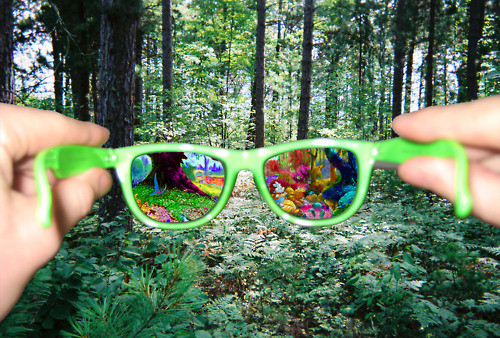Two new studies, independently published in the same journal, found that consciousness expanding substances like LSD or psilocybin (the psychoactive substance found in ‘magic mushrooms’) couldn’t be linked with mental health problems in the general population. Moreover, according to data fed from a nationwide survey, psychedelics make people less prone to suicide and suicidal thinking than the general population. Previously, studies showed that psychedelics have significant results in treating addiction and post traumatic stress, under guidance and supervision. The researchers stress, however, that some individuals may experience adverse psychological effects.

The first study was made by researchers at the Norwegian University of Science and Technology, who analyzed answers from more than 135,000 people who took part in National Survey on Drug Use and Health from 2008 to 2012. Of the 135,000 people involved, 19,299 reported they had used psychedelics at least once in their lifetime.
The researchers found that individuals in this group were not at increased risk of developing 11 indicators of mental-health problems such as schizophrenia, psychosis, depression, anxiety disorders and suicide attempts, as reported in the Journal of Psychopharmacology.
The second study, also reported in the Journal of Psychopharmacology, was made by a team at the University of Alabama in Birmingham and Johns Hopkins. Using the same dataset, the researchers found that those who used psychedelics regularly were found to be less prone to suicide and suicidal thinking than the general population. Breaking down the findings: people who used psychedelics at least weekly reported a 19 percent reduced likelihood of psychological distress, a 14 percent reduced likelihood of suicidal thinking, a 29 percent reduced likelihood of suicide planning, and a 36 percent reduced likelihood of attempting suicide versus the general population that did not use psychedelics.
The findings were made for only three psychedelic drugs: LSD, psilocybin and mescalin. There are many other psychedelic drugs, of course, like PCP, MDMA, fly agaric mushrooms, DMT or ketamine. The researchers decided to only focus on these three because they act upon the same serotonin 2A receptor, while other drugs work with other receptor, hence their chemical mode of action is different.
“Many people report deeply meaningful experiences and lasting beneficial effects from using psychedelics,” says Teri Krebs of the Norwegian University of Science and Technology.
Acid casualties – myth or not?
The US military heavily experimented with LSD shortly after it was discovered, but later shelved the controversial project since it found no immediate military use. On the contrary, people don’t want to hurt, let alone kill, anyone while under the influence of psychedelics. It was and likely still is used by intelligence agencies like CIA as a truth serum and means of torture. The 1960’s hippie wave brought LSD in the highlight again, this time as a recreational drug. Mainstream press at the time would report news of so-called “acid casualties” – youngsters who went on to develop mental illnesses like schizophrenia.
These two most recent studies seem to suggest that the acid casualties are somewhat of a myth. While it’s true that some people were psychotic following ingesting LSD, that doesn’t mean they were psychotic because of the substance. Early studies were crude and may have mistaken correlation for causation in some instances. Nevertheless, the drug was quickly made illegal and any attempts of making honest research on a controlled substance was obliterated. Today, millions of people have consumed LSD, taking little notice of the fact that’s illegal. Generally, self-reporting suggests these people are in good mental health, but because it’s an illegal substance, scientists have a hard time analyzing its effects in a honest and objective way. The first controlled medical trial of LSD in over 40 years was only made recently by psychiatrists in Santa Cruz. They found beneficial mental effects, like reduce anxiety.
“Concerns have been raised that the ban on use of psychedelics is a violation of the human rights to belief and spiritual practice, full development of the personality, and free-time and play,” Krebs says.
“This study assures us that there were not widespread ‘acid casualties’ in the 1960s,” says Charles Grob, a paediatric psychiatrist at the University of California, Los Angeles.
Grob, on the hand, cautions that Krebs’ conclusions should be taken with a grain of salt. For instance, following an LSD trip, some may develop hallucinogen persisting perception disorder (HPPD), a ‘trip’ that never seems to end, involving incessant distortions in the visual field, shimmering lights and coloured dots. “I’ve seen a number of people with these symptoms following a psychedelic experience, and it can be a very serious condition,” says Grob.
Krebs responds by pointing to studies that have found symptoms of HPPD in people who have never used psychedelics.
“We are not claiming that no individuals have ever been harmed by psychedelics,” says author Matthew Johnson, an associate professor in the Behavioral Pharmacology Research Unit at Johns Hopkins University in Baltimore, Maryland. “Anecdotes about acid casualties can be very powerful — but these instances are rare,” he says. At the population level, he says, the data suggest that the harms of psychedelics “have been overstated”.


